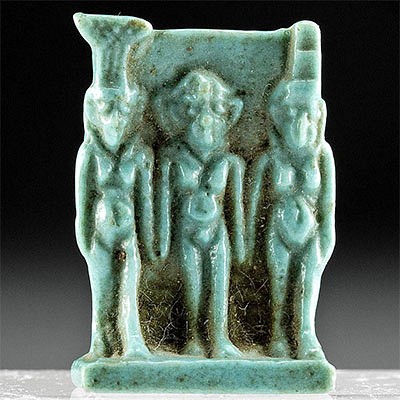10th C. Korean Koryo Celadon Glaze Vessel, ex-Museum
Lot 100
About Seller
Artemis Fine Arts
686 S Taylor Ave, Ste 106
Louisville, CO 80027
United States
Selling antiquities, ancient and ethnographic art online since 1993, Artemis Gallery specializes in Classical Antiquities (Egyptian, Greek, Roman, Near Eastern), Asian, Pre-Columbian, African / Tribal / Oceanographic art. Our extensive inventory includes pottery, stone, metal, wood, glass and textil...Read more
Categories
Estimate:
$550 - $825
Absentee vs Live bid
Two ways to bid:
- Leave a max absentee bid and the platform will bid on your behalf up to your maximum bid during the live auction.
- Bid live during the auction and your bids will be submitted real-time to the auctioneer.
Bid Increments
| Price | Bid Increment |
|---|---|
| $0 | $25 |
| $300 | $50 |
| $1,000 | $100 |
| $2,000 | $250 |
| $5,000 | $500 |
| $10,000 | $1,000 |
| $20,000 | $2,500 |
| $50,000 | $5,000 |
| $100,000 | $10,000 |
| $200,000 | $20,000 |
About Auction
By Artemis Fine Arts
Aug 5, 2021
Set Reminder
2021-08-05 10:00:00
2021-08-05 10:00:00
America/New_York
Bidsquare
Bidsquare : VARIETY SALE | Antiquities & Ethnographic Art
https://www.bidsquare.com/auctions/artemis-gallery/variety-sale-antiquities-ethnographic-art-7292
Featuring classical antiquities, ancient and ethnographic art from cultures encompassing the globe. Egyptian, Greek, Roman, Etruscan, Near Eastern, Asian, Pre-Columbian, Native American, African / Tribal, Oceanic, Spanish Colonial, Russian, Fossils, Fine Art, more! Artemis Fine Arts info@artemisgallery.com
Featuring classical antiquities, ancient and ethnographic art from cultures encompassing the globe. Egyptian, Greek, Roman, Etruscan, Near Eastern, Asian, Pre-Columbian, Native American, African / Tribal, Oceanic, Spanish Colonial, Russian, Fossils, Fine Art, more! Artemis Fine Arts info@artemisgallery.com
- Lot Description
East Asia, Korea, Koryo Dynasty, ca. 10th to 13th century CE. A beautiful wheel-thrown, fluted, sage green vessel with a narrow conical neck that flares out triumphantly at its top to a small pinhole opening. The piriform structure of its body is slightly accented by gentle ridges that run vertically along its exterior, leveling flat as they rise to the neck - giving the globular form a more geometric aesthetic. The base is decoratively lined with a streak of white paint. The matte glazed porcelain surface has a wonderfully smooth, velvet-like feel. A truly exquisite example in excellent condition. Size: 4.5" Diameter x 7" H (11.4 cm x 17.8 cm)
To create this ware, artisans apply a wash of slip (liquefied clay), which contains a high proportion of iron, to the body of the stoneware before glazing. The iron interacts with the glaze during the firing and colors it one of various shades of green. First made in China, celadon was exported to India, Persia, and Egypt in the Tang dynasty (618 to 907), to most of Asia in the Song (960 to 1279) and Ming (1368 to 1644) dynasties, and to Europe in the 14th century. The ware was popular because of its beauty; the Chinese also valued it because it resembled jade. Adding to its popularity was a widely believed superstition suggesting that a celadon dish would break or change color if poisoned food were put into it.
Korean celadons of the Koryo period had a glaze that varied from bluish green to a putty color. Many of the forms were lobed, based on the melon or the gourd. Chinese potters, noted for originating the practice, fired their celadons in brick kilns, but Korean artisans used traditional mud kilns that effectively blocked the flow of oxygen to produce a brilliant celadon tone.
Wares were both mold-made and wheel thrown. An incision technique enabled the clay surface to be adorned with subtle linear designs. Korean potters adapted and refined celadon technology from China to create distinctively Korean ceramics revered by elites in Korea, China, and Japan alike.
Provenance: ex-Ashland University Museum, Ashland, Ohio, USA, donated to Ashland University between July 1994 to December 1998
All items legal to buy/sell under U.S. Statute covering cultural patrimony Code 2600, CHAPTER 14, and are guaranteed to be as described or your money back.
A Certificate of Authenticity will accompany all winning bids.
Replace: PLEASE NOTE: Due to recent increases of shipments being seized by Australian & German customs (even for items with pre-UNESCO provenance), we will no longer ship Replace: most antiquities and ancient Chinese art to Australia & Germany. For categories of items that are acceptable to ship to Australia or Germany, please contact us directly or work with your local customs brokerage Replace: firm.
Display stands not described as included/custom in the item description are for photography purposes only and will not be included with the item upon shipping.
#164856Surface wear commensurate with age. Excellent condition.Condition
- Shipping Info
-
All shipping is handled in-house for your convenience. Your invoice from Artemis Gallery will include shipping calculation instructions. If in doubt, please inquire BEFORE bidding for estimated shipping costs for individual items.
-
- Buyer's Premium



 EUR
EUR CAD
CAD AUD
AUD GBP
GBP MXN
MXN HKD
HKD CNY
CNY MYR
MYR SEK
SEK SGD
SGD CHF
CHF THB
THB














